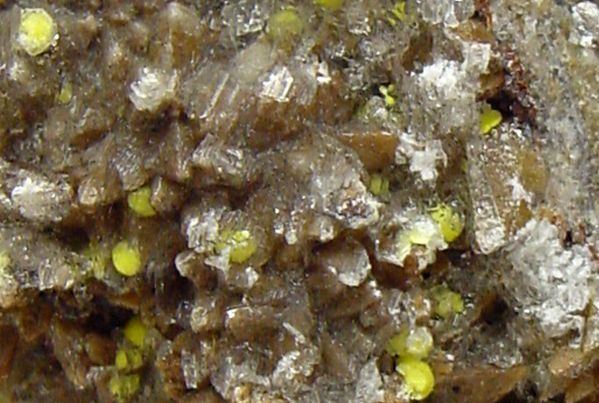Category Phosphate minerals Strunz classification 08.EB.05 Space group Monoclinic 2/m | Formula(repeating unit) Mg(UO2)2(PO4)2·10(H2O) Crystal system Monoclinic | |
 | ||
Unit cell a = 6.951(3) Å, b = 19.947(8) Å, c = 9.896(4) Å, β = 135.17(2)°; Z=2 | ||
Saleeite is a secondary uranium mineral occurring in the oxidized zones of uranium deposits, or as disseminations in carnotite-bearing sandstones. Its chemical formula is Mg(UO2)2(PO4)2·10(H2O).
It was discovered in 1932 at Shinkolobwe, Katanga Province, Democratic Republic of the Congo, and is named for Belgian mineralogist, Achille Salée (1883-1932), Professor at Université catholique de Louvain, Belgium. It was later determined that the Katanga mineral was meta-saleeite Mg(UO2)2(PO4)2·8(H2O) and the type locality was assigned to the Weißer Hirsch Mine, Neustädtel, Schneeberg District, Erzgebirge, Saxony, Germany.
References
Saleeite Wikipedia(Text) CC BY-SA
